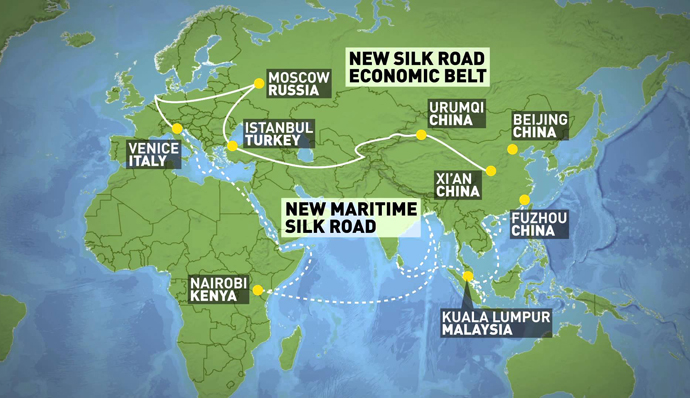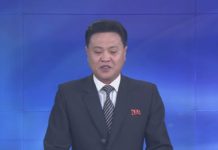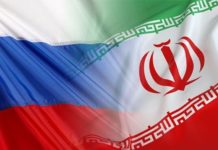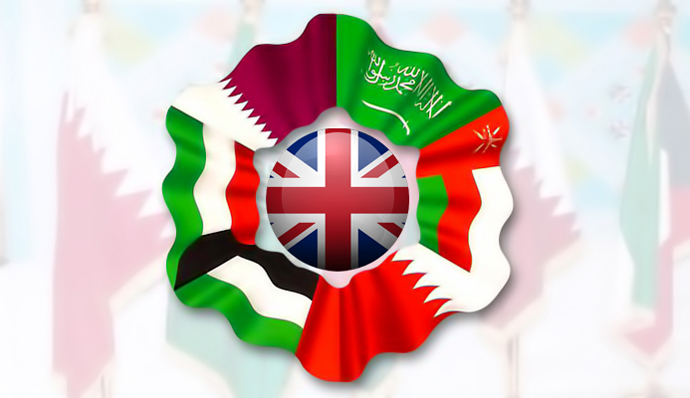By Doaa Hussein
For decades, The Chinese Silk Road did not grab the attention of world leaders. Its economic salience was forgotten until China unleashed a grand plan for revitalising this trade route.
In 2013, the Chinese president Xi-Jinping announced The Belt and Road initiative (the Silk Road Economic Belt and the 21st Century Maritime Silk Road) in order to revive the ancient road which links the east and the west.
Silk Road is an old network of trade routes connecting China and India to the Mediterranean Sea. The road has two branches, the northern branch starts at Bulgaria, and passes by Eastern Europe, Black Sea, Marmara Sea, and ending at Venice, Italy. The southern branch begins at china and goes through Turkestan, Iraq, Syria, then passes through Egypt’s gate to North Africa.
The Silk Road derives its name from the lucrative trade in Chinese silk carried out along its length; the term was coined by the German geography scientist “Ferdinand von Richthofen” in the 19th century. according to Wikipedia.
The road played a pivotal role in the cultural interaction and civilisation between the nations of the Asian continent. The importance of the Silk Road diminished after world traders found it easier to transmit their goods through sea, being much safer and cheaper. Now the Chinese authority considers the Silk Road as an important pillar in its plan to overhaul its sagging economy.
More than 60 countries and some international organisations are involved in this new project, which embrace un-precedented opportunities and challenges. Since his announcement 3 years ago, the Chinese president started to pay visits to some of the neighbouring countries in order to build up mutual beneficial economic relationship.
These countries will boost their own economic growth, while opening up their markets to the Chinese products. In the words of one think tank scholar, Belt and Road, “is not an entity or mechanism, but rather a cooperative, win-win initiative.”
In a bid to pave the way to the silk road, President Xi Jinping made his first overseas tour Two weeks ago to Egypt, Saudi Arabia, and Iran since assuming his office, on which 52 cooperation agreements were signed covering energy, communications, environment, culture, aerospace, and science and technology in order to deepen Beijing’s constructive engagement with the struggling yet promising region.
Such cooperation entails infrastructure projects including the development of an industrial area in the Suez Canal corridor that will form part of the “One Belt, One Road” initiative to expand China’s trade and economic ties in Asia and beyond.
Meanwhile, Chinese banks have already invested up to $250bn in approximately 60 countries in infrastructure projects such as ports, pipelines, railways, highways, and factories throughout Southeast, South, and Central Asia. The China Development Bank has announced plans to pump $900bn into investments in the forthcoming years. The Asian giant has also dedicated the $40bn Silk Road Fund to financing the initiative and the newly formed Asian Infrastructure Investment Bank (AIIB) will also finance Belt and Road projects.
According to experts, the way to flourishing the road is not an easy sailing, since each country sited along the belt faces a bulk of economic and political challenges. Large debt burdens, volatile markets, and devaluated currencies pose the highest macroeconomic problems in these states respectively. Political corruption facing these countries is also deemed to defer the success of the project.
Thus, enterprises and investors will not find it easy to operate in such environment, which need full understanding of the current economic and political conditions facing each country.















